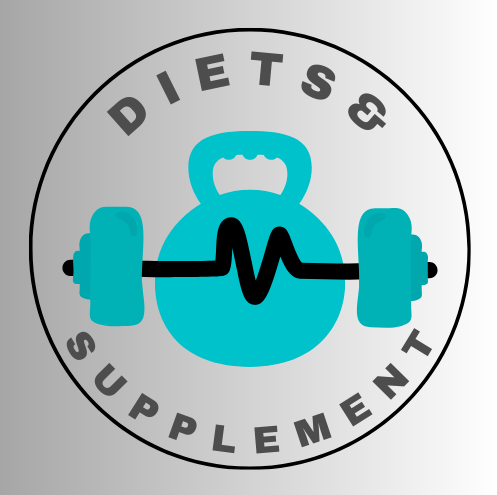 Muscle building is more than just lifting weights; it’s about understanding the science of your body’s adaptation and creating a sustainable, effective routine. When you exercise, you create small microtears in muscle fibers, which then repair and grow stronger over time. This process is what leads to muscle growth, also known as hypertrophy.
Muscle building is more than just lifting weights; it’s about understanding the science of your body’s adaptation and creating a sustainable, effective routine. When you exercise, you create small microtears in muscle fibers, which then repair and grow stronger over time. This process is what leads to muscle growth, also known as hypertrophy.
Setting realistic goals and maintaining a consistent workout schedule are key. You’ll need patience and commitment, as muscle building doesn’t happen overnight. It requires a steady effort, along with proper nutrition and recovery to see results.
Personalizing your approach is essential. Whether you’re an experienced athlete or just starting, understanding how different body types respond to workouts allows you to tailor your muscle building plan. What works for someone else may not be the right path for you.
=====>Try Leanbio to achieve your goals<=====
One often neglected aspect of muscle building is recovery. Your muscles need time to repair after strenuous workouts. Quality sleep, rest days, and active recovery practices are pillars of muscle growth just as much as the exercises themselves.
The Nutritional Cornerstone: Fueling Your Muscle Growth
Optimal muscle growth requires more than just lifting weights; it’s equally about what you put on your plate. I’m not just talking about increasing your protein intake, though that’s a big part of it. Carbohydrates, fats, and even the timing of your meals play pivotal roles in muscle development.
Proteins are the building blocks of muscle, but without the energy supplied by carbohydrates, your workouts might not be as effective. Fats are not the enemy either; they’re essential for hormone health, which can significantly impact muscle growth.
There’s a lot of debate over meal timing and frequency, with some claiming it’s critical and others saying it isn’t. Here’s the scoop: Total daily intake is what matters most, but for some, eating at regular intervals can manage hunger and aid in adequate nutrient distribution throughout the day.
Supplements, like whey protein or BCAAs, have become prevalent, but they’re not compulsory for everyone. Focus primarily on whole foods to meet your nutritional needs, then consider supplements if you’re falling short or need the convenience.
Hydration might not get as much attention, but it’s vital for muscle function and recovery. Dehydration can lead to suboptimal muscle performance and delay recovery times. So, remember to drink adequate amounts of water throughout the day.
Now, with your nutritional strategy in place, let’s shift gears and look at how you can structure workouts to capitalize on that nutrition and maximize muscle gains.
Workout Strategies: Maximizing Muscle Gains with Every Exercise
Understanding how to maximize muscle gains requires grasping the importance of a principle called progressive overload. This concept suggests that to continue building muscle, you need to constantly increase the demands on your musculoskeletal system. It means adding more weight, increasing the number of reps, or enhancing the intensity of your workouts over time. It’s a mistake to get comfortable with a set routine; to stimulate muscle growth, you must push beyond your comfort zone.
The conversation around weight training often pits compound exercises against isolation exercises. I see value in both. Compound exercises, like squats and deadlifts, target multiple muscle groups at once and are efficient for overall strength and mass building. Isolation exercises, such as bicep curls or leg extensions, target specific muscles. The trick is to use them judiciously to correct imbalances and fine-tune muscle development, ensuring a well-rounded routine.
Periodization is a systematic planning of athletic or physical training. The aim is to reach the best possible performance in the most important competition of the year. It involves progressive cycling of various aspects of a training program during a specific period. By structuring your workout phases – from high-volume, low-intensity to low-volume, high-intensity – you cater to the body’s need for both stress and recovery. It’s a powerful strategy to enhance strength and muscle size while minimizing the risk of overtraining.
Lastly, the simple truth is that injury can derail any muscle building plan. Maintaining proper form, warming up adequately, and listening to your body’s warning signs are key to staying in the game. It’s not just about lifting heavy weights; it’s about lifting smarter. Paying attention to these aspects ensures consistent progress without the setbacks of injury.
Advanced Tips and Tricks: Taking Your Muscle Building to the Next Level
Once the fundamentals of a muscle-building workout are in place, you might look for ways to push the envelope. This is where the details become invaluable. Fine-tuning your workout goes beyond adding more weight to the bar; it’s about optimizing every aspect of your routine to ensure continuous growth and improvement.
Understanding the mind-muscle connection can revolutionize your training. It’s about focusing on the sensation of each muscle contracting and relaxing during your workouts, which can lead to more effective sessions and, consequently, better muscle growth. It’s not a nebulous concept but a practical one grounded in improving neuromuscular control.
Hitting a plateau can be discouraging, but it’s a natural part of the muscle-building process. is to react strategically. This might mean changing the rep range, varying the exercises, or adjusting rest periods. It’s critical to listen to your body and adapt your workout regimen accordingly.
is to react strategically. This might mean changing the rep range, varying the exercises, or adjusting rest periods. It’s critical to listen to your body and adapt your workout regimen accordingly.
You’ve heard it before, but it bears repeating: tracking progress is essential. It’s not just about celebrating victories—it’s about understanding your journey. Recording your workouts and tracking your diet helps identify what works and what doesn’t, allowing you to make well-informed adjustments to your plan.
